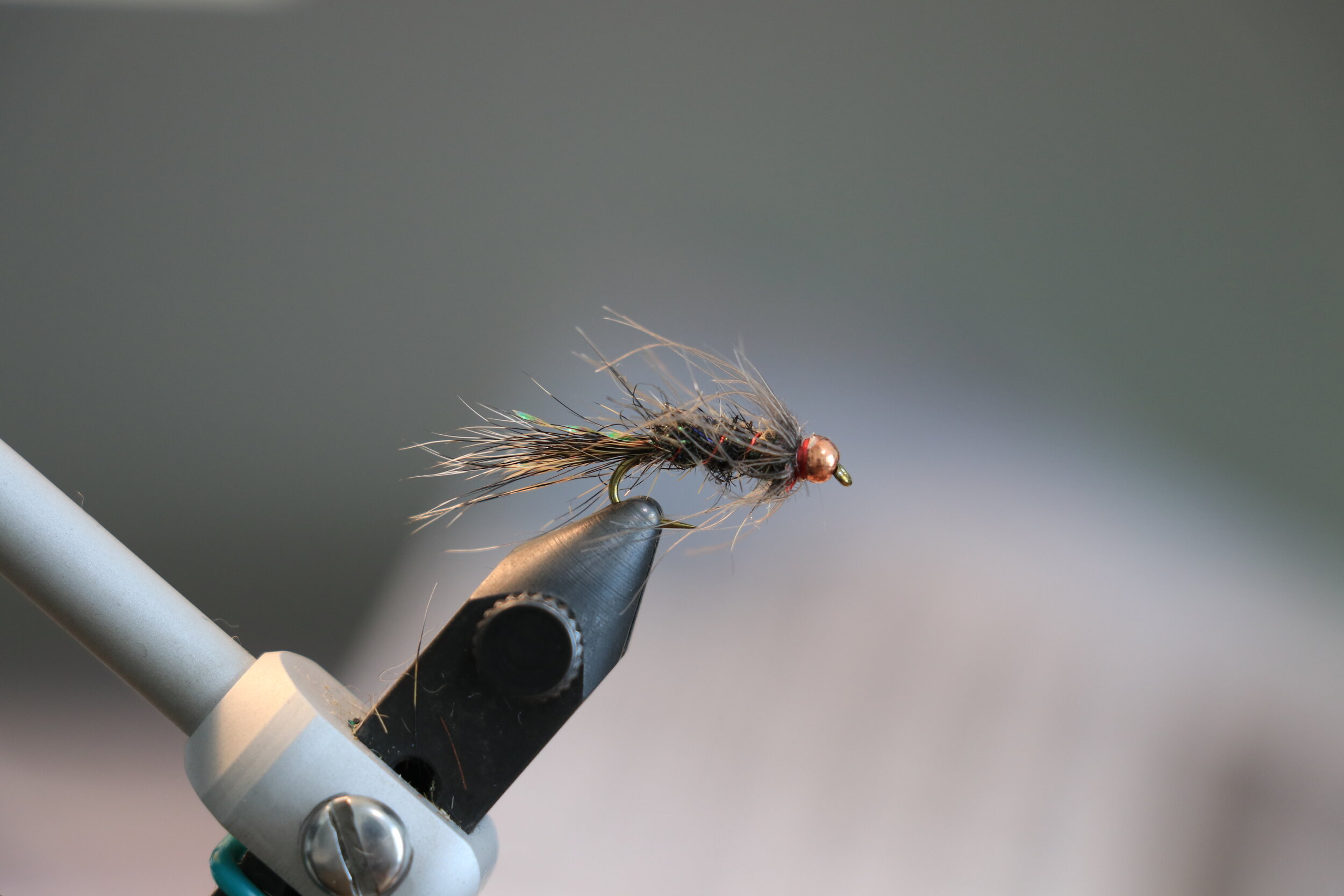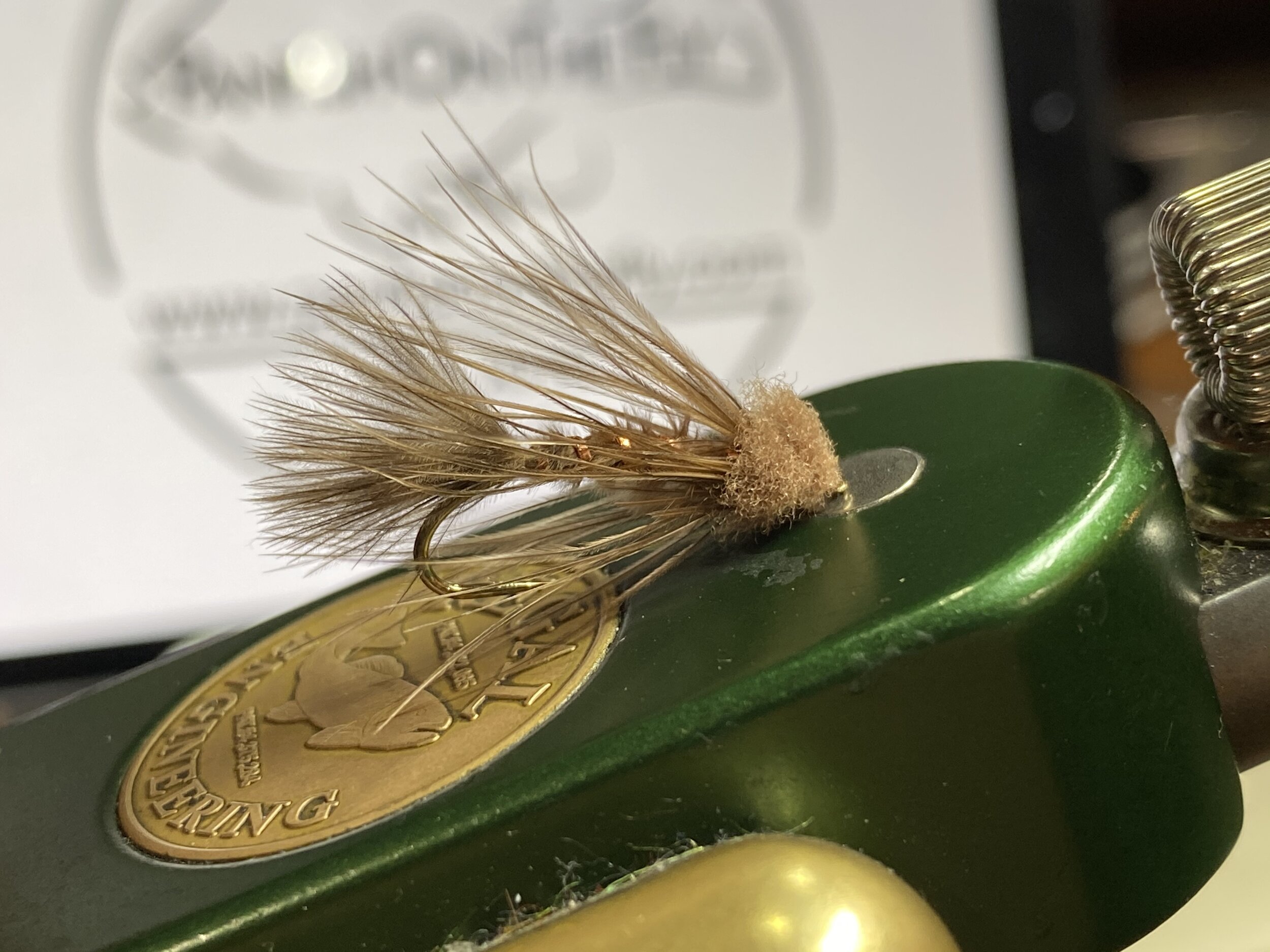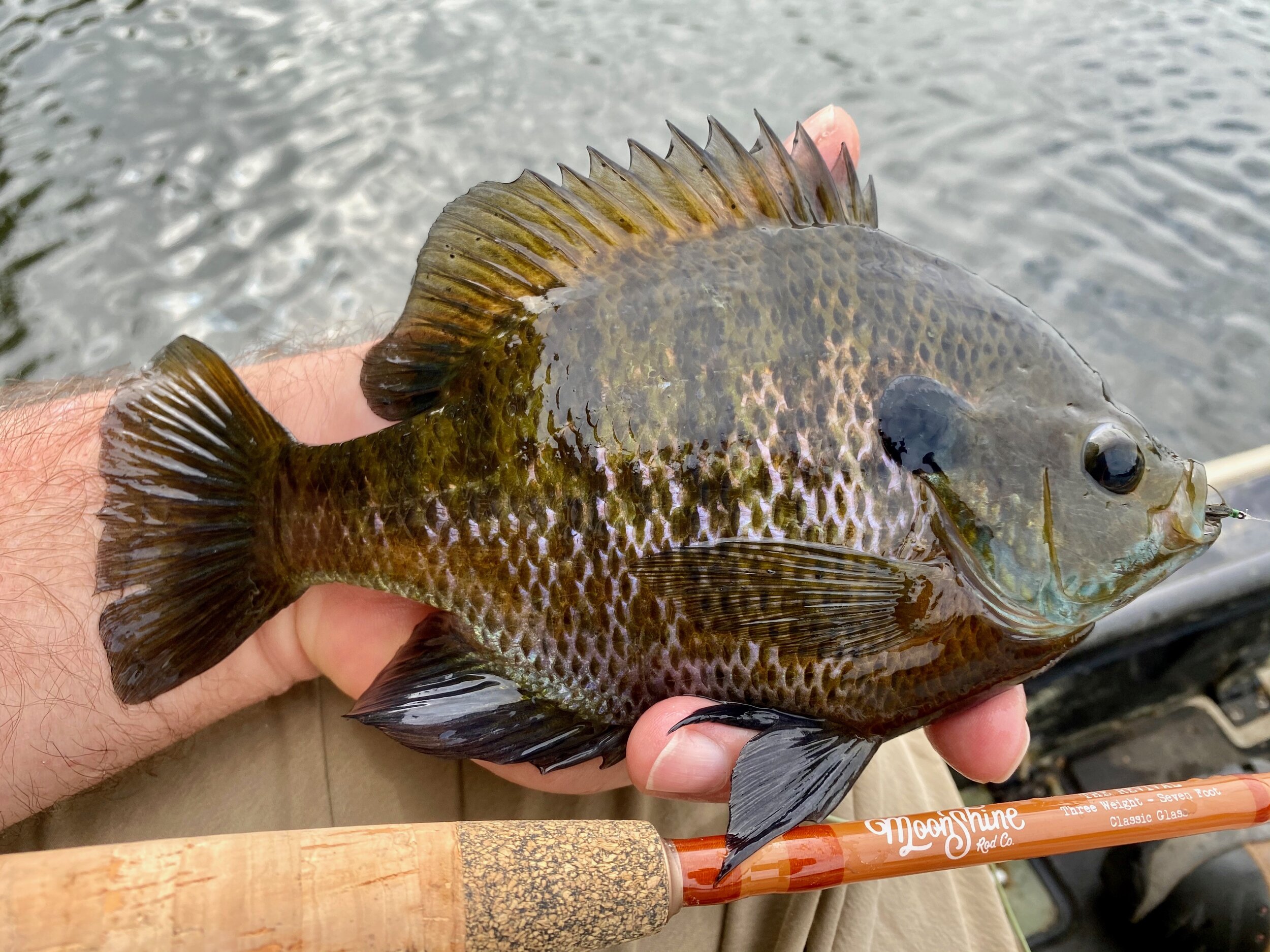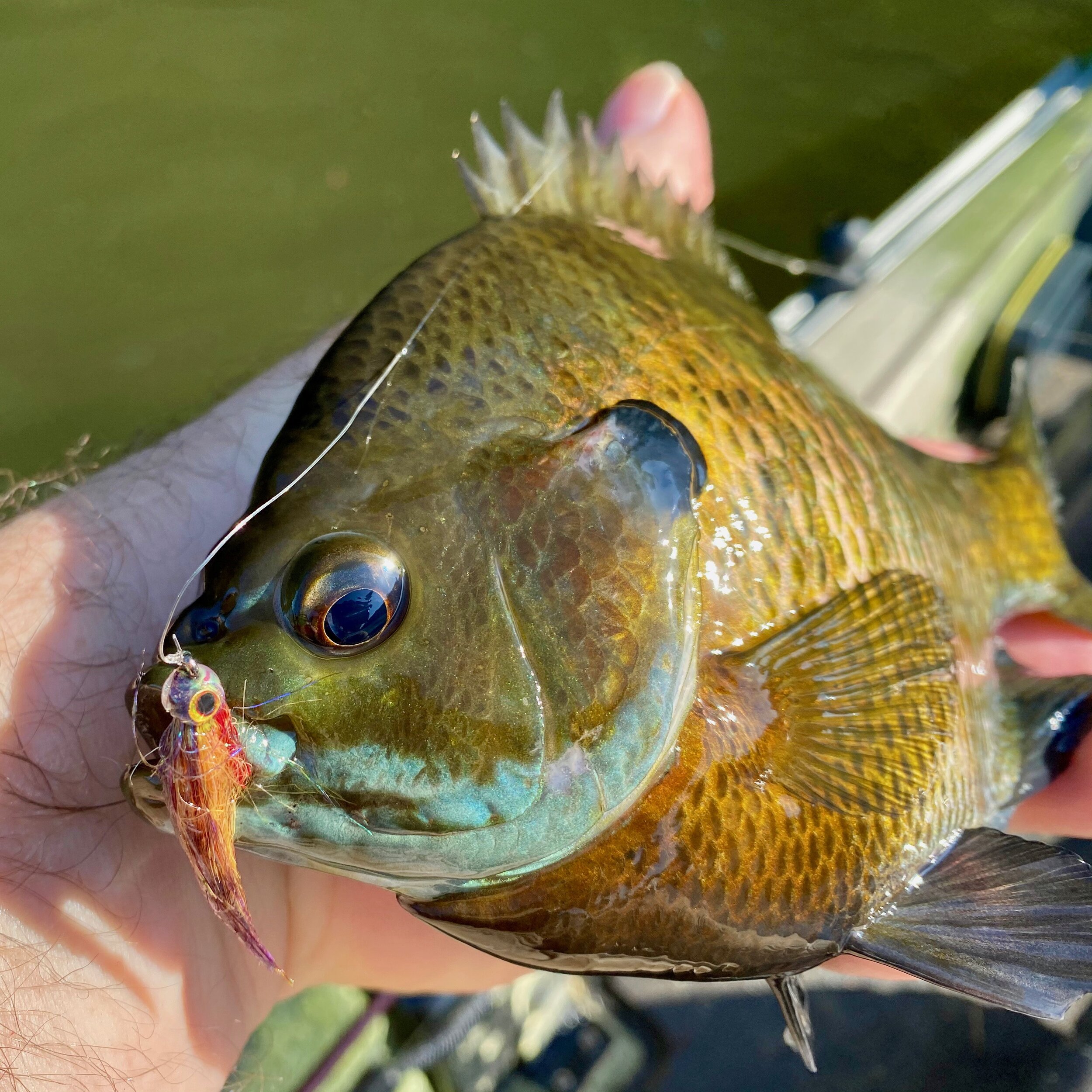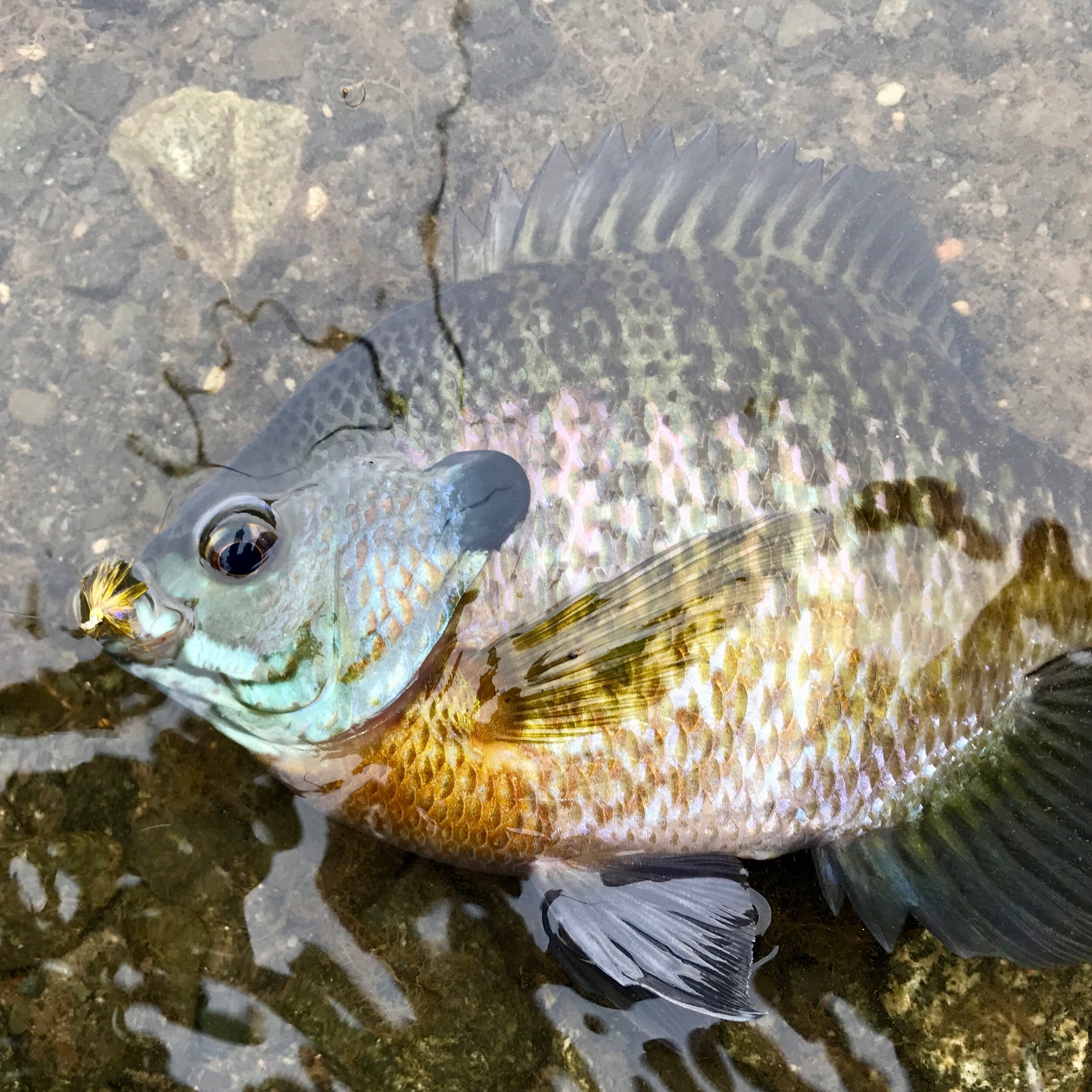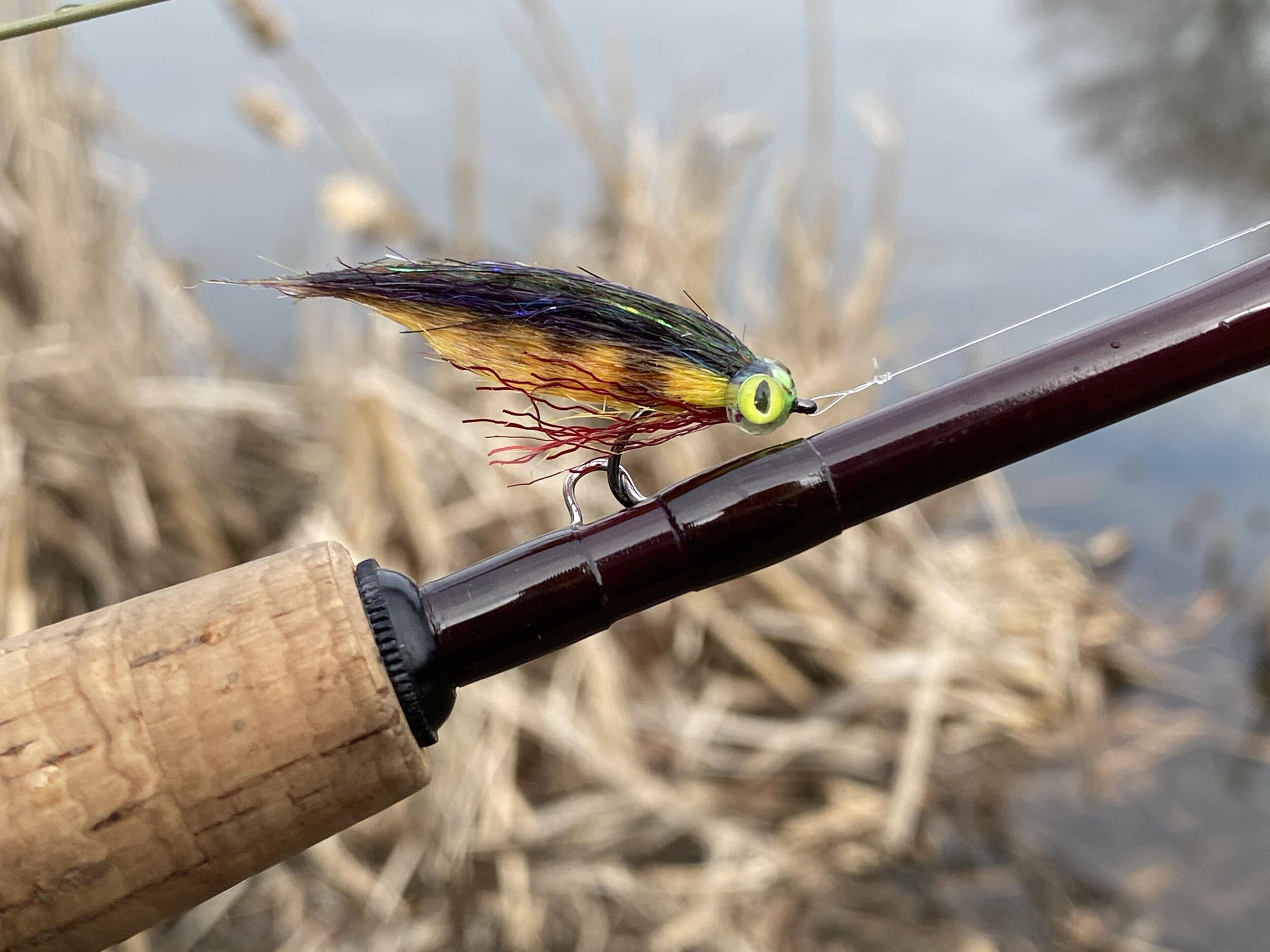2. You Can't Catch Them If You can't Reach Them
Targeting deep water panfish with a fly rod can be one of fly fishing's more difficult challenges. Getting your fly down to the fish and detecting the light hit of a bluegill inhaling your fly is no easy task. To make matters worse, fly line manufactures don't typically make sinking fly lines for the three and four weight rods we like to use for panfish. This is one of those times I will break out that five weight for fishing for panfish. You can find sink tip, intermediate, and full sinking lines for a five weight, and big panfish will still put a respectable bend in these stouter rods.
Here are a few tips for fishing deep water:
- Maintain a direct connection between you and the fly. Keep as much slack out of your line as possible - Keep your rod tip low to (or just under) the water's surface while retrieving the fly. By doing this, you will eliminate any excess slack line, and you will be able to detect strikes better.
- Watch your line like a hawk. Often you can detect the take of a fish by watching your line where it enters the water. Look for anything out of the ordinary and set the hook when you see something. You will be surprised how many times you end up hooking a fish despite the fact you never felt a thing. Practice this, and after a while, you will develop a "sixth sense" for visually detecting the take of a fish
- Practice casting sinking lines. Sink tips, intermediate and full sinking fly lines are cast differently from your standard weight forward or double taper fly line. Familiarize yourself with the differences in advance, so you are not flailing around on the water, trying to deliver your fly to the fish!
- Fish your subsurface patterns under an indicator. This common stream practice also works well in still water for presenting flies to fish holding in deeper water. Use a sliding indicator system to make casting easier when fishing deeper water.
